CIW v5 Database Design Specialist
Last Update 6 days ago
Total Questions : 124
1D0-541 is stable now with all latest exam questions are added 6 days ago. Just download our Full package and start your journey with CIW v5 Database Design Specialist certification. All these CIW 1D0-541 practice exam questions are real and verified by our Experts in the related industry fields.
Which security technique limits access by unauthorized users to parts of an enterprise database?
Which term describes the management of simultaneous transactions to prevent conflicts?
Using the Customer and Sales_Rep relations shown in the exhibit, you must determine a relational algebraic expression that will result in the following relation: Which of the following relational algebraic expressions would result in this relation? Using the Customer and Sales_Rep relations shown in the exhibit, you must determine a relational algebraic expression that will result in the following relation: Which of the following relational algebraic expressions would result in this relation?
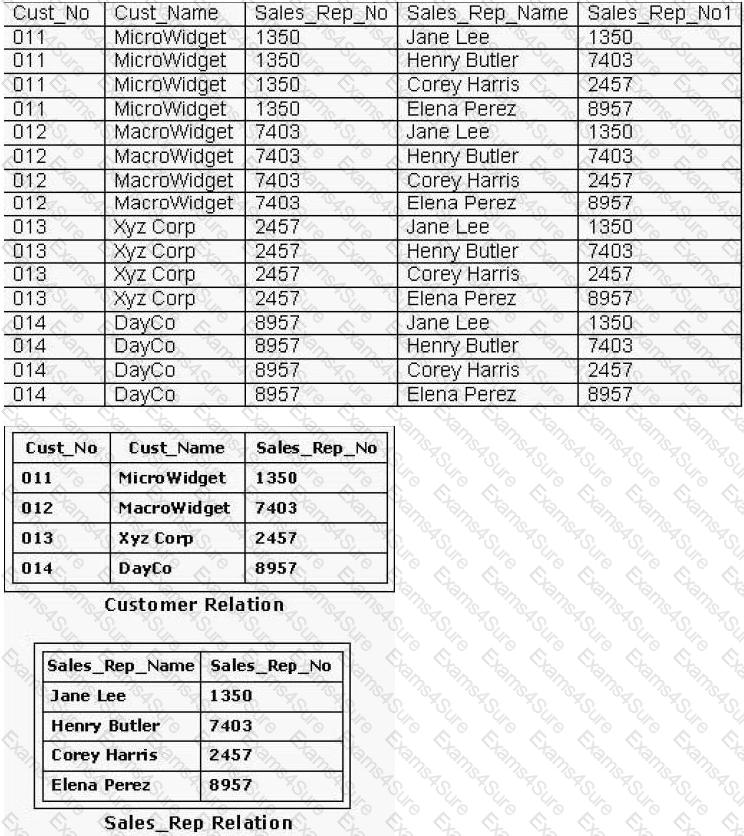
Which component in the three-tier database architecture handles the data-processing and business logic?
Which concurrency control method should be used only when conflicts between transactions rarely occur?
Consider the Recreation relation shown in the exhibit. You need to apply a SQL statement to the
Recreation relation that will return the following data:
Which SQL statement applied to the Recreation relation will return this data?
Consider the Recreation relation in the exhibit. A data operation that changes one of the tuples for Student_ID 1003 must be performed. It is necessary to change one of the activities from swimming to tennis. The Student_ID and Activity attributes make up the primary key for the Recreation relation. All related information must be altered, as well. Which SQL statement or statements would best accomplish this?
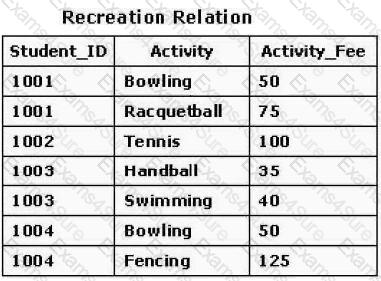
Consider the Dept1_Parts and Dept2_Parts relations shown in the exhibit. Which of the following SQL statements would create an intersection of the two relations with the widest variety of Structured Query Language dialects?
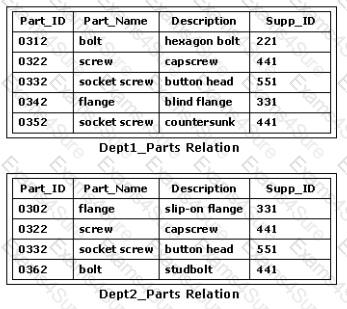
The exhibit shows a relation for a company projects. Which candidate key(s) would best serve as the primary key for this relation?

Consider the entity-relation (ER) diagram shown in the exhibit. When the logical database design phase is completed, which of the following is a valid DBDL description of the base relations for the ER diagram?
Consider the Information Engineering diagram in the exhibit showing the relations BUILDING and RESIDENT. What is the relationship between BUILDING and RESIDENT?
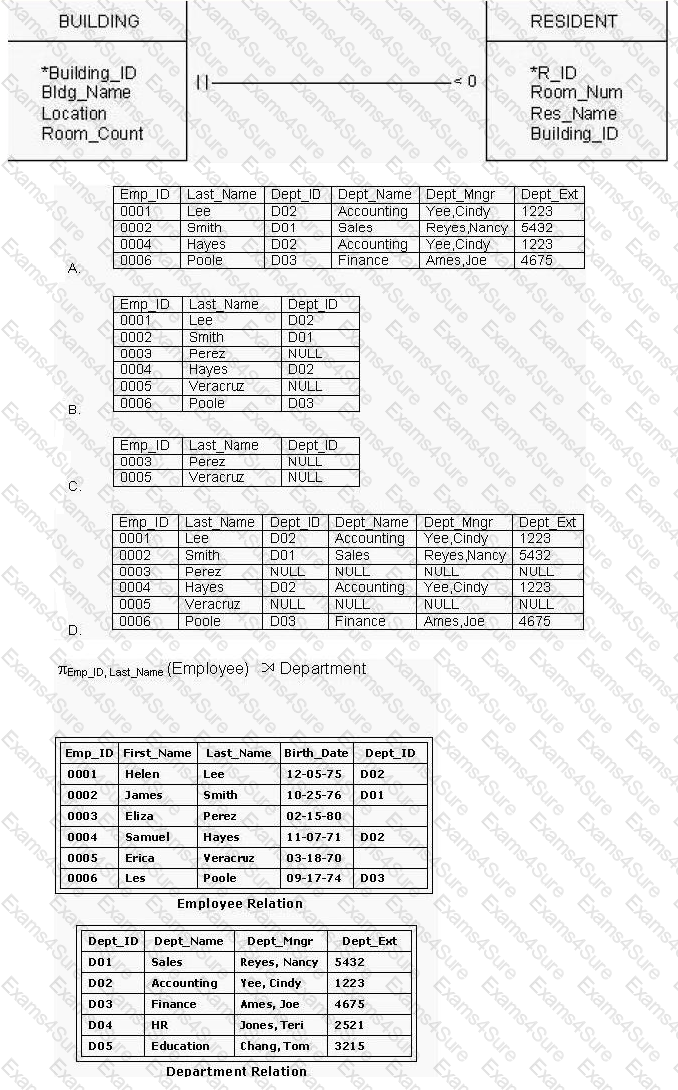
Consider the following database information:
domain s_id: integer domain grd: fixed length
character string length 1
STUDENT_GRADE(
Student_Number: s_id NOT NULL
Grade: grd ) Primary Key
Student_Number
During which phase of the database design process would this information be developed?
Which subset of Structured Query Language (SQL) is used to perform operations such as data retrieval or deletion on the data contained in a database?
The exhibit shows a table called Housing Relation that relates a unique student identification number with a dormitory building and a room fee for that building. Each building charges only one fee and a student can live in only one building. The key for the Housing Relation is Student_I
D.
This table is in which normal form?
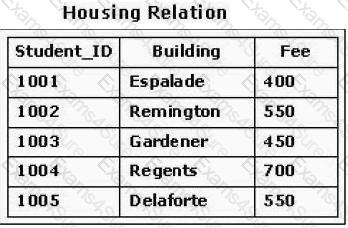
Consider the Registration relation shown in the exhibit. Which of the following SQL statements would return the Registration2 relation from the Registration relation?
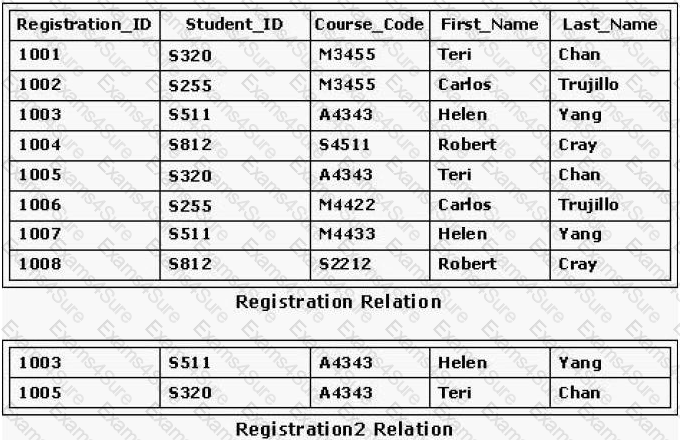


TESTED 29 Apr 2024
Hi this is Romona Kearns from Holland and I would like to tell you that I passed my exam with the use of exams4sure dumps. I got same questions in my exam that I prepared from your test engine software. I will recommend your site to all my friends for sure.
Our all material is important and it will be handy for you. If you have short time for exam so, we are sure with the use of it you will pass it easily with good marks. If you will not pass so, you could feel free to claim your refund. We will give 100% money back guarantee if our customers will not satisfy with our products.